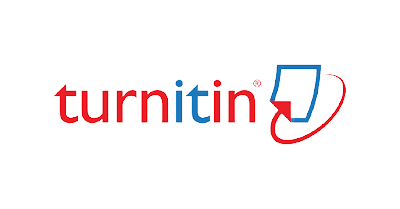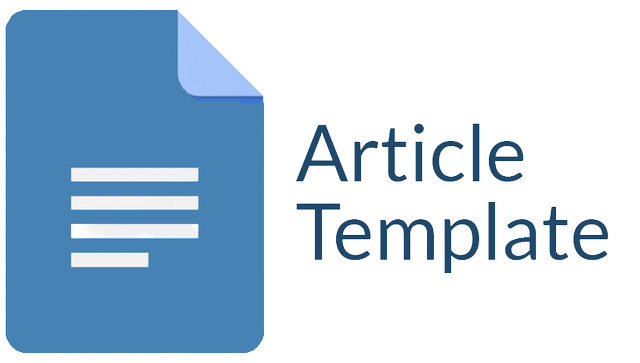KAJIAN EFEKTIFITAS GULLY PLUG DALAM PENGENDALIAN RUN OFF DI KAWASAN HULU DAS PULISAN
Abstract
The flood problem in Pulisan village that occurred in 2019 is one of the problems that needs to be addressed immediately because it causes losses to residents living around the river, and disrupts vehicle traffic. One of the causes of flooding in the Pulisan river is the magnitude of the run off and the large flow rate so that potential flooding events can occur. Therefore, run-off control is needed in the upstream area of the Pulisan river. Pulisan watershed has a total watershed area of 3.25 km2 and has 9 tributary channels. The location reviewed is in the Pulisan river channel with selected sections is the channel of 5 Pulisan rivers which has a watershed area of 0.2512 Km2. The Araren-Pigrandma MRG rain post and the Maen Climatology rain post are sources of maximum daily rainfall data used with a time span of 2002 to 2021. HEC-HMS software is used to obtain the parameters needed to obtain a peak discharge of 2.2 m3 / second and a planned flood discharge. HEC-RAS software to analyze water level and flow rate when using gully plug. The simulation results show that from several types of gully plugs, a significant reduction in flow speed is in type 60 gully plugs, namely the flow speed to 0.6 – 1 m / second, the flow speed does not cause deposits in the channel.
Downloads
References
Andawayanti, U. (2019). Pengelolaan Daerah Aliran Sungai (DAS) Terintegrasi. Tim UB Press.
Aryani, N., Ariyanti, D. O., & Ramadhan, M. (2020). Pengaturan Ideal tentang Pengelolaan Daerah Aliran Sungai di Indonesia (Studi di Sungai Serang Kabupaten Kulon Progo). Jurnal Hukum Ius Quia Iustum, 27(3). https://doi.org/10.20885/iustum.vol27.iss3.art8
Bai, Y., & Sun, G. (2022). The streamwise velocity distribution in a two-stage channel with ice cover. Water Supply, 22(1). https://doi.org/10.2166/ws.2021.225
Batubara, D. N., Windarto, A. P., Hartama, D., & Satria, H. (2019). Analisis Metode K-MEANS Pada Pengelompokan Keberadaan Area Resapan Air Menurut Provinsi. Seminar Nasional Sains & Teknologi Informasi (SENSASI).
Brunner, G. W. (2016). HEC-RAS Hydraulic Reference Manual. US Army Corps of Engineers, Hydrologic Engineering.
Ely, J. (2019). Kualitas Air Hasil Desalinasi Menggunakan Sistim Destilasi Sederhana. Global Health Science, 4(3).
Esquivel, A., Lazarian, A., & Pogosyan, D. (2015). Studying the interstellar magnetic field from anisotropies in velocity channels. Astrophysical Journal, 814(1). https://doi.org/10.1088/0004-637X/814/1/77
Firmansyah, A. (2021). Analisis Deskriptif Potensi Pariwisata di Desa Sekitar Kawasan Ekonomi Khusus (KEK) Likupang. Jurnal Pariwisata Terapan, 5(2). https://doi.org/10.22146/jpt.55822
Fitriyani, N. P. V. (2022). Analisis Debit Air di Daerah Aliran Sungai ( DAS ). Ilmuteknik.Org, 2(2).
Greenwood, C., Vogler, A., & Venugopal, V. (2019). On the variation of turbulence in a high-velocity tidal channel. Energies, 12(4). https://doi.org/10.3390/en12040672
Harmon, N., Rychert, C. A., Davis, J., Brambilla, G., Buffet, W., Chichester, B., Dai, Y., Bogiatzis, P., Snook, J., van Putten, L., & Masoudi, A. (2022). Surface deployment of DAS systems: Coupling strategies and comparisons to geophone data. Near Surface Geophysics, 20(5). https://doi.org/10.1002/nsg.12232
Isa, M., Sumarauw, J. S. F., & Hendratta, L. A. (2020). Analisis Debit Banjir Dan Tinggi Muka Air Sungai Marisa Kecamatan Limboto Barat Kabupaten Gorontalo. Jurnal Sipil Statik, 8(4), 591–600.
Kandel, D., Lazarian, A., & Pogosyan, D. (2016). Extending velocity channel analysis for studying turbulence anisotropies. Monthly Notices of the Royal Astronomical Society, 461(2). https://doi.org/10.1093/mnras/stw1296
Liu, C., & Nepf, H. (2016). Sediment deposition within and around a finite patch of model vegetation over a range of channel velocity. Water Resources Research, 52(1). https://doi.org/10.1002/2015WR018249
Lu, Z., Lazarian, A., & Pogosyan, D. (2020). Producing synthetic maps of dust polarization using a velocity channel gradient technique. Monthly Notices of the Royal Astronomical Society, 496(3). https://doi.org/10.1093/MNRAS/STAA1570
Nufutomo, T. K. (2022). PERUBAHAN IKLIM SEBAGAI ANCAMAN KETAHANAN KUALITAS AIR PADA DAERAH ALIRAN SUNGAI: LITERATUR REVIEW. Jurnal Reka Lingkungan, 10(3).
Soewarno. (2015). Klimatologi; Pengukuran dan Pengolahan Data Curah Hujan, Contoh Aplikasi Hidrologi dalam Pengelolaan Sumber Daya Air (Seri Hidrologi). In Klimatologi; Pengukuran dan Pengolahan Data Curah Hujan, Contoh Aplikasi Hidrologi dalam Pengelolaan Sumber Daya Air (Seri Hidrologi).
Sumarauw, J. (2017). Hidrograf satuan sintetis gama-i (hss gama-i). Bahan Ajar Mahasiswa, Universitas Sam Ratulangi, Manado.
Sumarauw, J. S. F. (2016). Pola Distribusi Hujan Jam-Jaman Daerah Minahasa Selatan dan Tenggara. In Jurnal Sipil Statik (Vol. 4, Issue 11).
Sumarauw, J. S. F. (2018). HEC-HMS. Bahan Ajar Mahasiswa, Universitas Sam Ratulangi, Manado.
Utama, L. (2022). Kawasan Berpotensi Banjir Pada Daerah Aliran Sungai (DAS) Kuranji. Jurnal Teknik, 5(2).
Wibowo, M. (2011). Analisis Peraturan Perundangan tentang Daerah Resapan Air di DAS Citarum Hulu. JURNAL TEKNOLOGI LINGKUNGAN, 3(2).
Copyright (c) 2024 Kelvin Haryono Auwyanto, Tiny Mananoma, Jeffry S. F. Sumarauw

This work is licensed under a Creative Commons Attribution-ShareAlike 4.0 International License.
Jurnal allows anyone to compose, correct, and do derivative works, even for commercial purposes, as long as they credit for the original work. This license is the freest. It is recommended for maximum distribution and use of licensed material.
The submitted paper is assumed not to contain any proprietary materials that are not protected by patent rights or patent applications; The responsibility for technical content and protection of proprietary materials rests with the authors and their organizations and not the responsibility of journal or its editorial staff. The primary (first/appropriate) author is responsible for ensuring that the article has been viewed and approved by all other authors. The author's responsibility is to obtain all necessary copyright waivers to use any copyrighted material in the manuscript before submission.
Jurnal Pendidikan, Sains dan Teknologi allows the author(s) to hold the copyright without restrictions and allow the author(s) to retain publishing rights without restrictions. Jurnal Pendidikan, Sains dan Teknologi CC-BY-SA or an equivalent license as the optimal license for the publication, distribution, use, and reuse of scholarly work. Jurnal Pendidikan, Sains dan Teknologi allows the author(s) to hold the copyright without restrictions and allow the author(s) to retain publishing rights without restrictions. Jurnal Pendidikan, Sains dan Teknologi CC-BY-SA or an equivalent license as the optimal license for the publication, distribution, use, and reuse of scholarly work.
In developing strategy and setting priorities Jurnal Pendidikan, Sains dan Teknologi recognize that free access is better than priced access, libre access is better than free access, and libre under CC-BY-SA or the equivalent is better than libre under more restrictive open licenses. We should achieve what we can when we can. We should not delay achieving free in order to achieve libre, and we should not stop with free when we can achieve libre.
Jurnal Pendidikan, Sains dan Teknologi is licensed under a Creative Commons Attribution-ShareAlike 4.0 International License.
You are free to:
- Share a copy and redistribute the material in any medium or format
- Adapt a remix, transform, and build upon the material for any purpose, even commercially.
- The licensor cannot revoke these freedoms as long as you follow the license terms.






